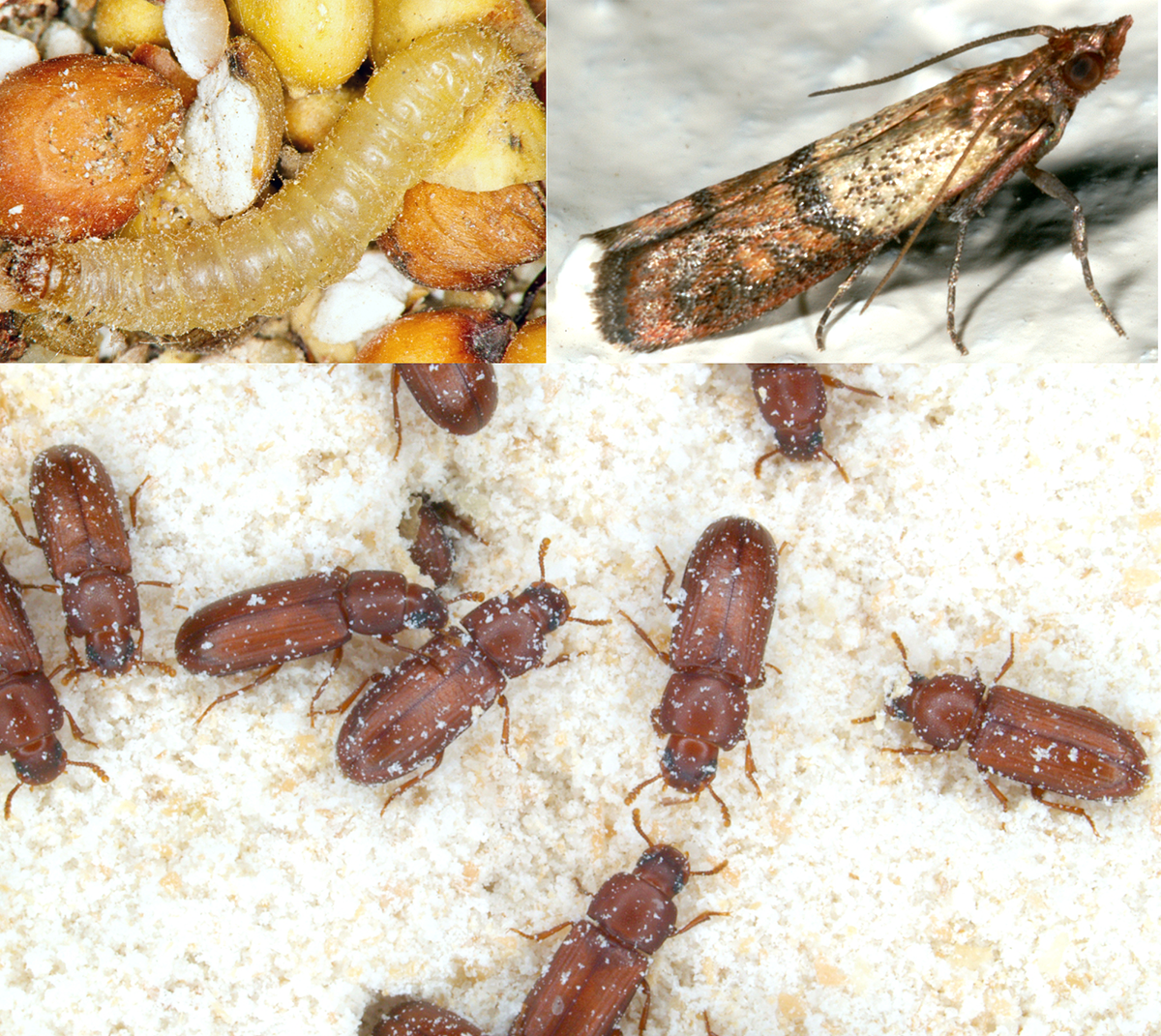
By Kait Chapman, Extension Educator in Lancaster County
There are a number of different insects that can infest homes and wreak some form of havoc, whether they bite you or your pets, damage your home or belongings or are simply a nuisance. A common category of household insects, called “pantry pests,” are insects that infest dried food, most often found in the pantry.
Pantry pests are most often encountered when they wander away from infested food items. Because they can contaminate food, they should be properly identified and managed. There are a number of different types of pantry pests, including flour, drugstore and cigarette beetles and grain and bean weevils. The two most common pantry pests reported to our office are carpet beetles and Indian meal moths.
The only way to eliminate a pantry pest infestation is to discard contaminated and infested items and protect and properly store non-infested food. Common food products that can be infested by insects include:
• Flour, cereals and cake mixes.
• Crackers, cookies and chocolate.
• Nuts, dried beans, popcorn and rice.
• Powdered milk and creamers.
• Spices and tea.
Some infestation sources are less obvious but should also be examined, including all pet food, bird seed and even rodent baits. Rodent baits, which contain seeds, are often placed in inconspicuous areas like attics and forgotten about until moths and beetles begin to show up around the home. Regardless of what type of item it is, all infested items should be bagged and discarded. Bagged items can be frozen for at least four days to kill any lingering insects before being thrown out. Shelves, cupboards and other surfaces should also be thoroughly cleaned and wiped down. The use of insecticides is not recommended for pantry pests.
Preventing re-infestation is another important step in the management process. Dried food items that could potentially be infested should be stored in air-tight, insect-proof containers. Food can also be stored in the refrigerator or freezer until the home is pest-free.
FOR MORE INFORMATION
Nebraska Extension publication, “Insect and Mite Pests in the Kitchen and Pantry” (EC3049), is at https://go.unl.edu/pantrypests.